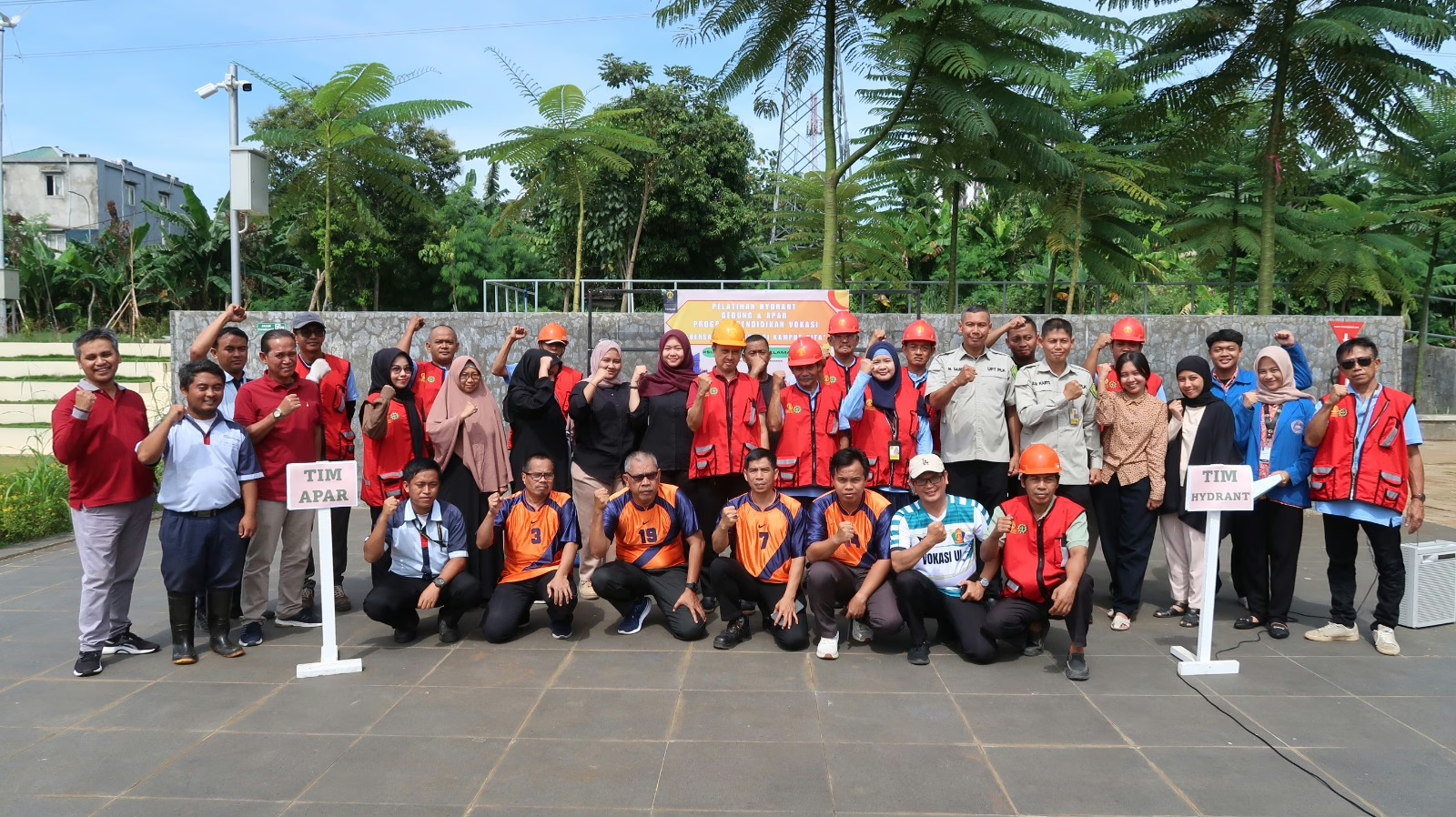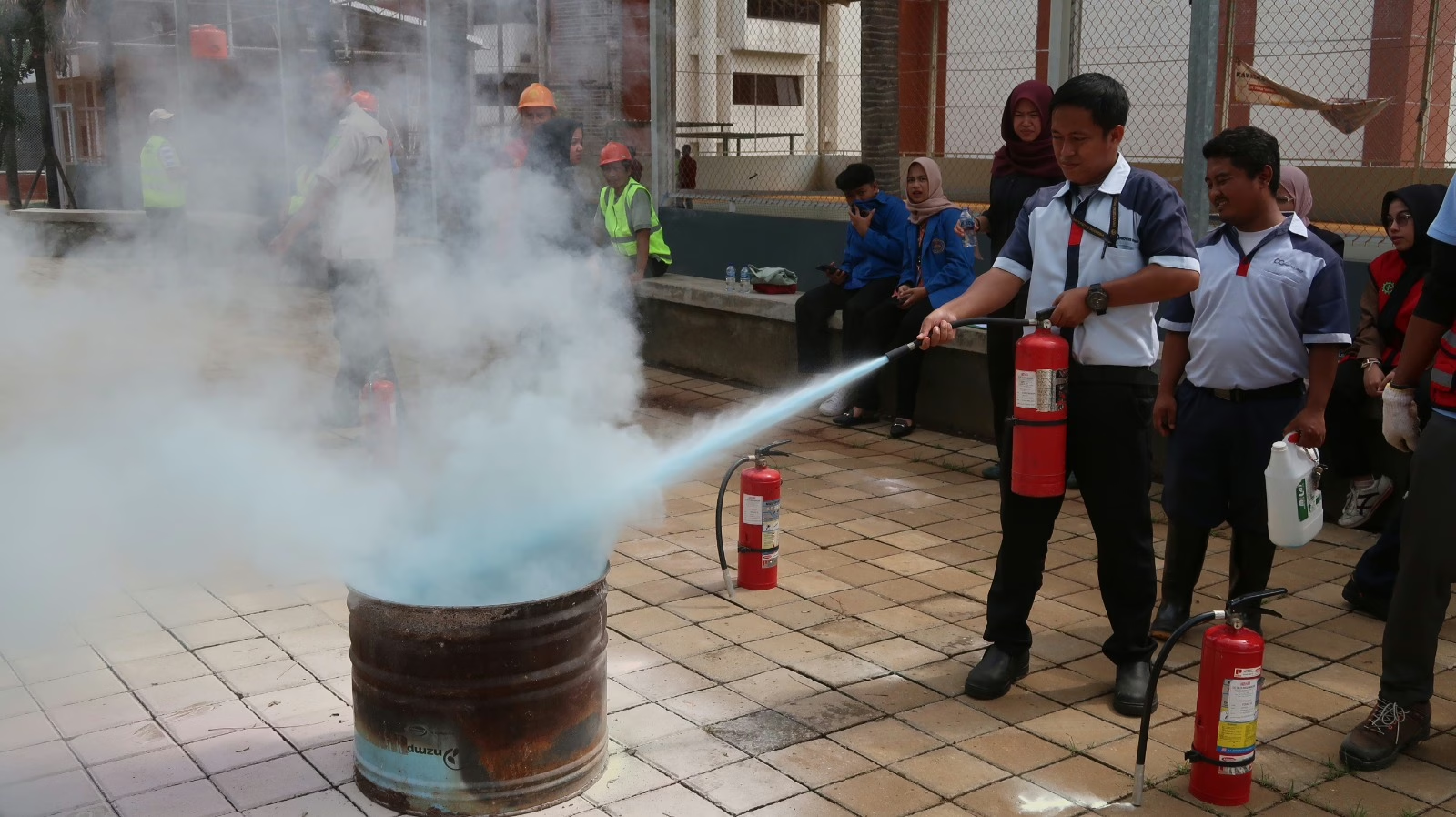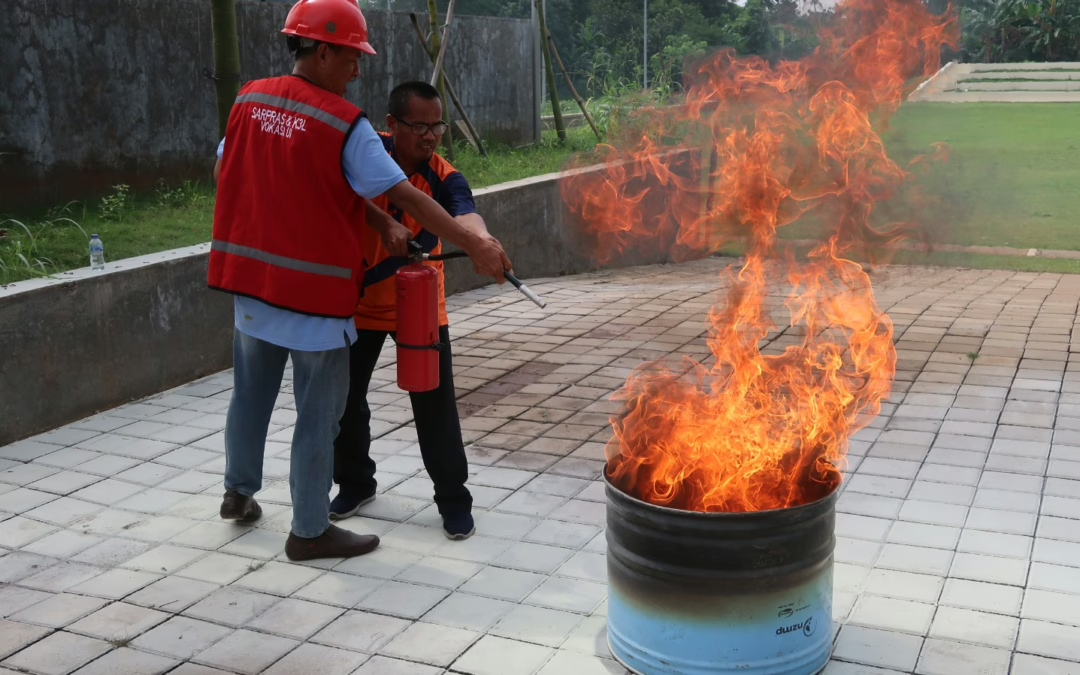Depok-The Universitas Indonesia (UI) Vocational Education Program, through the HSE (Occupational Health, Safety, and Environment) unit, as well as Maintenance of Facilities and Infrastructure, conducted training on the use of building hydrants and Light Fire Extinguishers on November 28, 2024. The activity, which also supports Sustainable Development Goals (SDGs) 11, Sustainable Cities and Settlements, involved elements of education personnel, security officers, and cleaning staff as participants, with the aim of increasing understanding and skills in reducing disaster risks, including dealing with potential fires in the campus environment. The training includes theory and practice of using building hydrants and Light Fire Extinguisher, emergency response simulations, and identification of fire-related risks.
 (Photo: Various units in the UI Vocational environment conduct hydrant and light fire extinguisher training)
(Photo: Various units in the UI Vocational environment conduct hydrant and light fire extinguisher training)
The training was held in order to meet the percentage of implementation of Occupational Health, Safety, and Campus Environmental Health (HSE) in accordance with the established standards. This training ensures that all personnel involved have adequate skills in handling emergency situations, thereby increasing the security and safety of the entire academic community. Not only that, this training is also expected to support efforts to prevent environmental risks by ensuring that fire extinguishers, such as light fire extinguisher, are well maintained, ready to use at any time, and use safe and environmentally friendly materials.
 (Photo: UI Vocational academics conducting light fire extinguisher training)
(Photo: UI Vocational academics conducting light fire extinguisher training)
In the HSE procedure, periodic training is one of the important indicators in realizing a sustainable campus that complies with national and international safety standards. Vice Director for Resources, Ventures, and General Administration of UI Vocational, Priyanto, S.S., M.Hum., expressed his commitment and appreciation for the implementation of the training. “UI Vocational continues to be committed to managing a safe and healthy campus environment. We continue to ensure that all safety procedures have met occupational safety regulations. Not only that, we also consistently strive to continue to foster a culture of risk awareness and disaster response, which will directly improve the quality of the work and learning environment,” said Priyanto.


